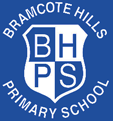BHPS Computing Curriculum
Intent:
At BHPS we aim to prepare our children for a rapidly changing world through the use of technology. Our computing curriculum is designed to enable them to use computational thinking and creativity to further understand our world. Our curriculum design has deep links with Mathematics, English, Science, and Design and Technology. At the core of our computing curriculum is computer science, in which pupils are taught the principles of information and computation; how digital systems work, and how to put this knowledge to use through programming. Building on this knowledge and understanding, we intend for our children to use information technology to create programs and systems, within a range of content. By the end of Key Stage 2, we want our children to become digitally literate -to able to use, and express themselves and develop their ideas through, information and communication technology – at a level suitable for the future workplace and as active participants in a digital world.
Implementation:
Computing skills are taught both discretely and cross-curricular, supporting other areas of learning across the school. In Foundation and Key Stage 1, children are taught to use equipment and software confidently and purposefully, to communicate and handle information and to support their problem solving, recording and expressive skills. In Key Stage 2, our children extend their use of computing that they use for communication, investigation and programming and work to understand how to communicate safely. Our planned curriculum for digital literacy that includes online safety is broad in covering a range of issues.
Our Computing curriculum is designed to allow children time to think, discuss, practise, explore and embed. This allows time for teaching, practice and repetition – both in a year group and across both key stages. Curriculum coverage is mapped out carefully from Year 1 to Year 6, which allows some key concepts to be developed at a deeper level of learning, understanding and mastery. Fundamental knowledge and skills are covered at key points throughout the primary phase and repeated to allow pupils to build on what has been taught before. Where year groups are covering an area in more depth, this will be highlighted in green on the Curriculum Depth Map below. Lessons will be planned and a knowledge organiser provided for pupils, which outlines the area to be taught, where the new knowledge and skills fit in with their prior learning, any sticky knowledge they need to understand and key vocabulary they need to learn.
Impact:
Impact is evidenced through:
- Proficient users of technology who are able to work both independently and collaboratively
- Computing hardware and software being utilised to enhance the learning outcomes of our children, across the curriculum.
- Clear progression in technical skills
- Demonstrating knowledge when using tools or skills in other areas of the curriculum and in enrichment opportunities both in and out of school
- A learning buzz as children engage in programming, instruct floor robots, prepare online safety presentations and design body confidence video campaigns
- The use and outcomes of the varied activities
- Low-stakes tests/quizzes
